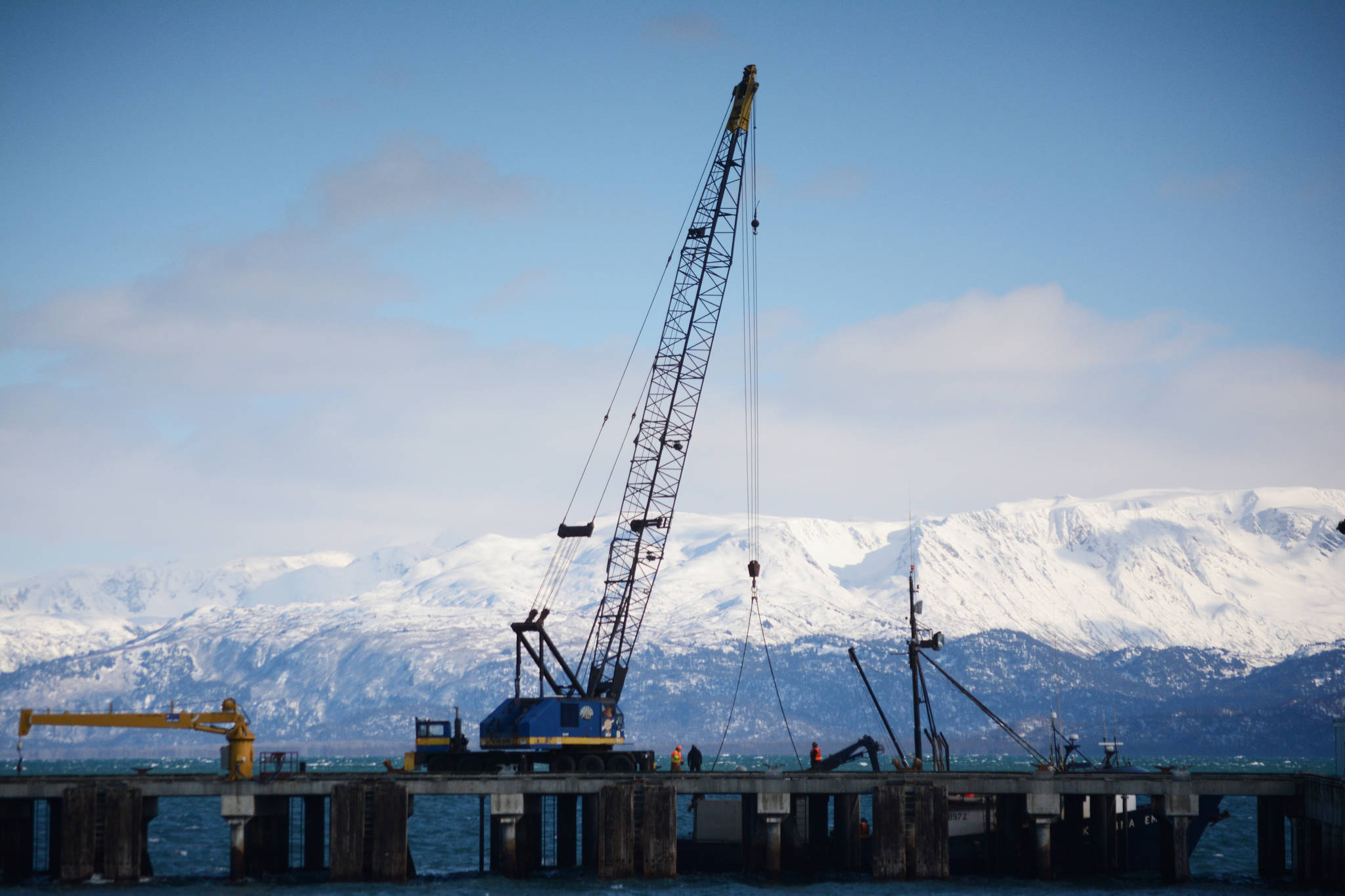The Homer Harbor Deep Water Dock has served chip ships, crab boats, cruise ships, several jack-up rigs, US Navy destroyers and even a Greenpeace vessel. Like the saying goes, it’s a jack of all trades, but not a master of one — except the purpose it was designed for, a fish processing facility.
In a work session Monday afternoon before the Homer City Council, representatives from R &M Consultants and Northern Economics presented preliminary findings of a 2015 feasibility study done to determine how the Deep Water Dock could be expanded. Economists also talked about the trickier question of how in Alaska’s challenged economy that expansion could be funded. A final report will come out next month.
John Daley, waterfront engineer with R &M, told the council the dock had these deficiencies:
• The existing 525-foot long trestle (the long ramp connecting the dock to the shore) has a low load-bearing, making it inefficient for loading and offloading vessels;
• A narrow trestle also makes it impossible for a fully-loaded cargo container on a forklift to turn around; and
• The 345-foot wide dock face is too small for large ships like 1,000-foot cruise ships. Cruise ships like the Holland America Amsterdam have to tie up using floating mooring buoys.
“It was designed for fish processing, but its main use was for wood chip export,” Daley said. “It’s not really well built for cargo operation and cruise ships. It’s in great shape, but not for what you want to do.”
As part of the study, R &M also identified deficiencies like mooring buoy links about to fail. The buoys have been replaced. R &M also did an upland study of the old chip pad, and as a result improvements were done to tear down the old wooden fence, replace it with a chain link fence, and put in security lights and cameras.
Daley suggested four alternatives for expanding the Deep Water Dock:
• Alternative 1: Replace in phases the existing dock, starting with a wider and heavier capacity trestle, a $15 million project. The second phase would increase the dock length to 500 feet, making it better suited to cruise ships, a $40 million project. Buses also could drive right up to ships.
• Alternative 2: Build a roll on, roll off, dock with a new trestle and Syncrolift towers (towers that can be raised up and down) that could accommodate containers on barges.
• Alternative 3: Build a high-tide, low-tide ramp barge berth system. Some barge operators don’t like that system because trucks could be accidentally driven off ramps, Daley said.
• Alternative 4: Build a U-shaped dock similar to the Pioneer Dock. The Pioneer Dock doesn’t work as a true U-shaped system where trucks can be driven in a loop since the west end is a secured area for the U.S. Coast Guard Cutter Hickory.
Daley also added a fifth alternative just to have on the table, building a new Deep Water Dock as part of a proposed large-vessel harbor expansion. R &M also did a feasibility study for uplands expansion as part of a new large-vessel harbor. That expansion would include a jetty curving to the northwest surrounding the harbor, with a park at the end of the jetty. The harbor would include new mooring for the Hickory and Coast Guard Fast Response Cutters and a large-vessel floating dry dock.
“There’s probably more demand for a new moorage basin than a new dock,” Daley said. “If you built it, it would probably fill up as soon as you made it available.”
One big dream for the Deep Water Dock is to make Homer a cargo offloading port. Most of Alaska’s cargo goes through Anchorage, about 95 percent, and then the Kenai Peninsula share is trucked south.
“That’s the big reason we don’t get stops in Homer right now,” said Michelle Humphrey, an economist with Northern Economics. Cargo has fluctuated in Homer over the years, with the biggest burst in the 1990s when the lower Kenai Peninsula went through a logging boom and spruce log chips were shipped overseas through the Deep Water Dock.
Commercial fishing still plays a big role, Humphrey said.
“One catch is there isn’t a lot of fish processing that goes on in Homer,” she said. “That impacts the Deep Water Dock.”
Cruise ships also have fluctuated over the years. The demand for cruise ships is driven by national or international demand for routes, she said. Since Homer isn’t a terminus, that also dictates the demand, she said.
Cargo could come to Homer if Homer were pitched as an alternative or back-up offloading spot should Anchorage be cut off by a catastrophic earthquake or other disaster.
John Fisher, another Northern Economics economist, said financing of ports depends where on the spectrum of public vs. private a port falls. A public port with public infrastructure leads to different financing than a private port. Homer might get some leverage by considering options to bring in private operators — an idea once considered 30 years ago with the Trillium proposal to lease the entire Spit to a private operator.
“We don’t see any magic solutions that are going to support the dock right now, ready to go,” Fisher said.
Michael Armstrong can be reached at michael.armstrong@homernews.com.


